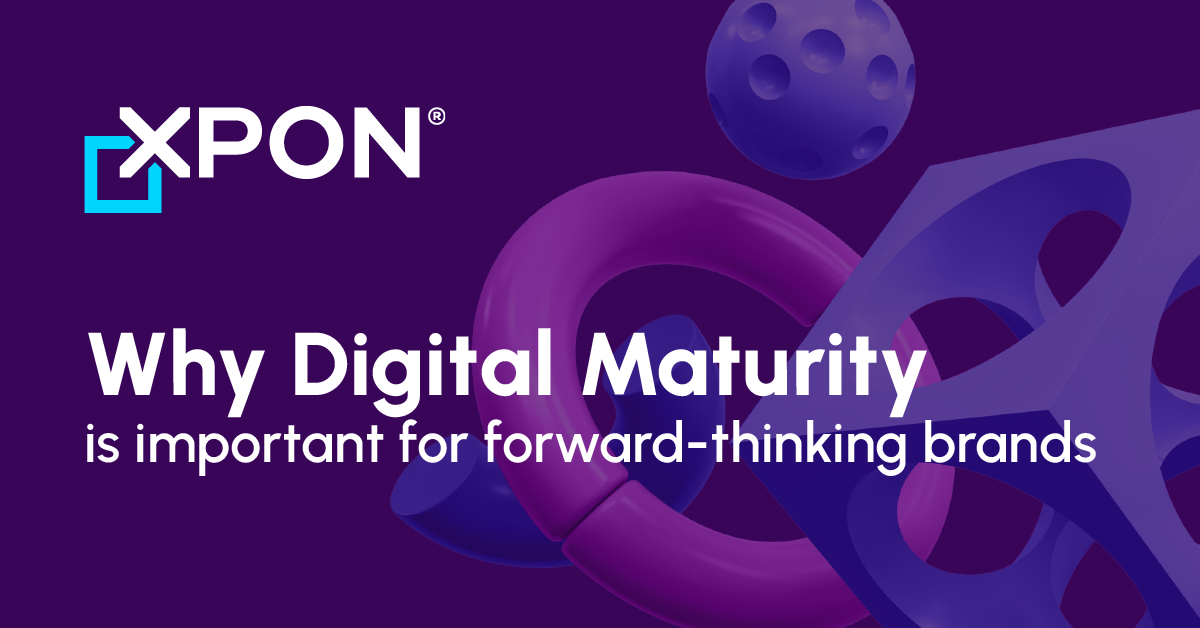Digital Maturity. Customer Experience. CX. Terms that have exploded into every aspect of an organisation’s strategy and offering and gives a definitive name to what sales, marketing, digital and brand teams have always known to be key – how do our customers interact with our brand along their entire buying journey, is this a good experience with our brand, and is this experience reported accurately from our digital channels?
In a digital world faced with constant fluctuations in privacy, technology, and regulations, how do brands know they’re hitting the mark and ensuring they have a strategic roadmap that accounts for changes, enables a sustainable approach to marketing and CX, and truly makes the customer the centre of everything they do?
What is Digital Maturity?
Digital maturity refers to a company’s level of sophistication in measuring and delivering customer experiences across its digital touch-points.
It comprises two things:
- Visibility into digital customer experiences (i.e. understanding how customers behave and feel – and why – in a privacy-safe way)
- The ability (tech and skills) to action these insights throughout the organisation quickly and iteratively to improve the experience your customer has with your brand
Together, these two elements represent a brand’s digital maturity. And the more mature the brand, the more they feed each other in a continuous loop of learning and growth.
The XPON Digital Maturity Framework has been adapted from the Boston Consulting Group’s Digital Maturity Framework to further the definition above and encapsulate the broader challenges faced by organisations in the digital world (including privacy, data ownership, customer expectations etc.)
Why is measuring and knowing Digital Maturity important?
The digital marketing industry is changing rapidly which is creating challenges that are forcing brands to rethink how they interact with customers.
Where in the past, data was somewhat of an enigma to customers – nowadays, first-party data acquisition and the privacy and secure use of that data are increasingly important to users. Along with this, customers expect this data to be used to create tailored and personalised digital experiences for them. Throw into the mix increased scrutiny and regulations around data and you have a far different landscape for digital marketing than in previous years.
But don’t just take our word for it. The numbers show that an organisation that is higher in digital maturity is twice as likely to grow market share than low-maturity brands.
Statistics also back the increasing expectations from customers for more personalised engagement:
- 96% of customers say positive digital experiences are important to their loyalty
- 96% of customer say they’ll pay more for positive digital experiences
- 86% say positive digital experiences influence the brands they choose
What are some of the benefits of Digital Maturity?
Whilst your company might be in a good position already in terms of focusing on your customers, by working on increasing your digital experience maturity you can also benefit from:
- getting the most value out of your tech stack
- developing sustainable strategies to align the whole business around customer-centricity
- changing data practices (and perceptions of customer data)
- having the speed and agility to adjust quickly and proactively to challenges and changes in the market.
- And of course, by combining qualitative and quantitative data, increase conversions and customer lifetime value across your digital touch-points.
So, where do we start?
You start by identifying your organisation’s Digital Maturity as it stands now. This provides a foundation that feeds into a clear roadmap for measuring improvement and where to invest time, money and resources.
How can we measure Digital Maturity?
When partnering with XPON, we benchmark your business against our Digital Maturity Framework. This framework enables brands to measure where their business sits on the path to a truly customer-centric, profitable digital experience. It allows you to understand your current digital experience capability by uncovering challenges and gaps across 6 core pillars:
- Organisation
- Measurement
- Automation
- Access
- Audience
- Assets
Once completed, the Digital Maturity Framework will benchmark which stage your organisation is at on our maturity scale. The four stages we have identified are:
In our future maturity blog series we’ll spend time breaking down what each of these stages means for your organisation, and steps that you can take to increase your maturity.
Understanding, and working on, your organisation’s Digital Maturity doesn’t happen in a day. It requires education and buy-in across the business, and a willingness to invest in the time and technology to identify your current state and map out steps for improvement. Knowing where you are on the maturity ladder is imperative to optimise digital activities and integrate them with other channels to create a seamless omnichannel experience for customers. Not only will it provide a better digital customer experience, it can be the difference maker in driving increased revenue, reducing business costs, and greater customer loyalty.
Want to see where your organisation sits?
Get in touch with us to discuss your organisation’s capability across marketing and CX measurement, audience activation, and digital experience strategies.

Download the 2023 report.
XPON’s 2023 Digital Maturity Insights Report reveals the latest trends, challenges, and opportunities extracted from surveying over 100 marketing, technology, and digital leaders across Australia and New Zealand.
Download the Insights Report to learn how similar businesses are performing and the key trends and challenges impacting their digital maturity.
